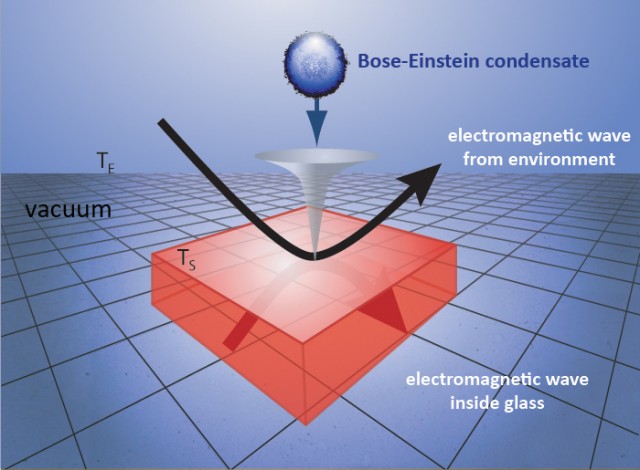Physics Blog 6
Hypothetically, matter is unable to have negative mass. Based upon Isaac Newton's laws of physics, mass tends to always be considered in the positive, yet never in the negative. Newton's Second Law of Motion states that a force is equal to the mass of an object times its acceleration (F = ma). Thus, an object pushed will accelerate in the direction that it is being pushed in, with mass accreting in the direction of the force as well.
(abstract hypothetical depiction)
Essential to the construction of negative mass, specific and exact conditions were needed. Rubidium atoms were cooled to slightly above absolute zero K (-273 C), creating a Bose-Einstein condensate. A Bose- Einstein condensate is a state of matter of a diluted gas cooled to absolute zero, causing large fractions of bosons (subatomic particle) to occupy the lowest quantum state, where macroscopic quantum phenomena becomes noticeable. Predicted by Satyendra Nath Bose and Albert Einstein, particle move extremely slowly, following the principles of quantum mechanics leading to wave-like behavior. They can also synchronize and move in unison, creating a substance known as a superfluid, flowing without using energy.
Peter Engels, a WSU professor or physics and astronomy, and a group of researches created these conditions by using lasers to slow the particles making them colder, allowing hot and high energy parties to escape leading to additional cooling.
(Bose-Einstein condensate)
These lasers trapped the atoms as if they were in a microscopic bowl, where the rubidium superfluid now has regular mass. The town breaks, allowing the rubidium to rush out, expanding as the rubidium in the center pushes outward.
The negative mass comes into play when the physicists and researchers applied a second set of lasers that kicked the atoms back and fourth, changing the way they spin. When the rubidium then rushed out faster, it behaves as if it has negative mass. It is pushed, yet accelerates backwards, as if to create an invisible was says Micheal Forbes, a professor at WSU.
Upon encounters with failure to understand negative mass during previous attempts, the technique exhibited by the WSU researchers avoids these conflicts. Post discovery of the negative mass, Forbes states:
"What's a first here is the exquisite control we have over the nature of this negative mass, without any other complications," said Forbes. Their research clarifies, in terms of negative mass, similar behavior seen in other systems. This heightened control gives researchers a new tool to engineer experiments to study analogous physics in astrophysics, like neutron stars, and cosmological phenomena like black holes and dark energy, where experiments are impossible. "It provides another environment to study a fundamental phenomenon that is very peculiar."
Baylor Wallace
May 3, 2017


No comments:
Post a Comment